GOA RABIES HOTLINE :+91 7744029586View the Signs of Rabies video
Pushing the boundaries of understanding to support rabies control elsewhere in India
This campaign is not just controlling rabies in Goa, it is actively evaluating and refining methods to support the development of an approach that can have a much wider impact in India.
Every large-scale control effort needs to first trial and evaluate different methods to develop efficient approach. Goa is a one of India's smallest states, however the campaign serves as a test-bed for developing rabies control methods that will be of relevance to controlling rabies across India.
Our aim is to refine the process of vaccinating large numbers of dogs efficiently through research, publishing in peer-reviewed scientific journals so that this experience can contribute to groups looking to control rabies elsewhere in India. Ultimately we hope to support the India national strategy through tools and methods so that ours is the last generation to know the horrors of rabies in India.
Here we provide a summary of research studies that have resulted from the work in Goa state.
Community attitudes and perceptions towards free-roaming dogs in Goa, India
Evaluation of an Immunochromatographic Assay as a Canine Rabies Surveillance Tool in Goa, India
Elimination of human rabies in Goa, India through an integrated One Health approach
Review of Oral Rabies Vaccination of Dogs and Its Application in India
Portable Rabies Virus Sequencing in Canine Rabies Endemic Countries Using the Oxford Nanopore MinION
One million dog vaccinations recorded on mHealth innovation used to direct teams in numerous rabies control campaigns
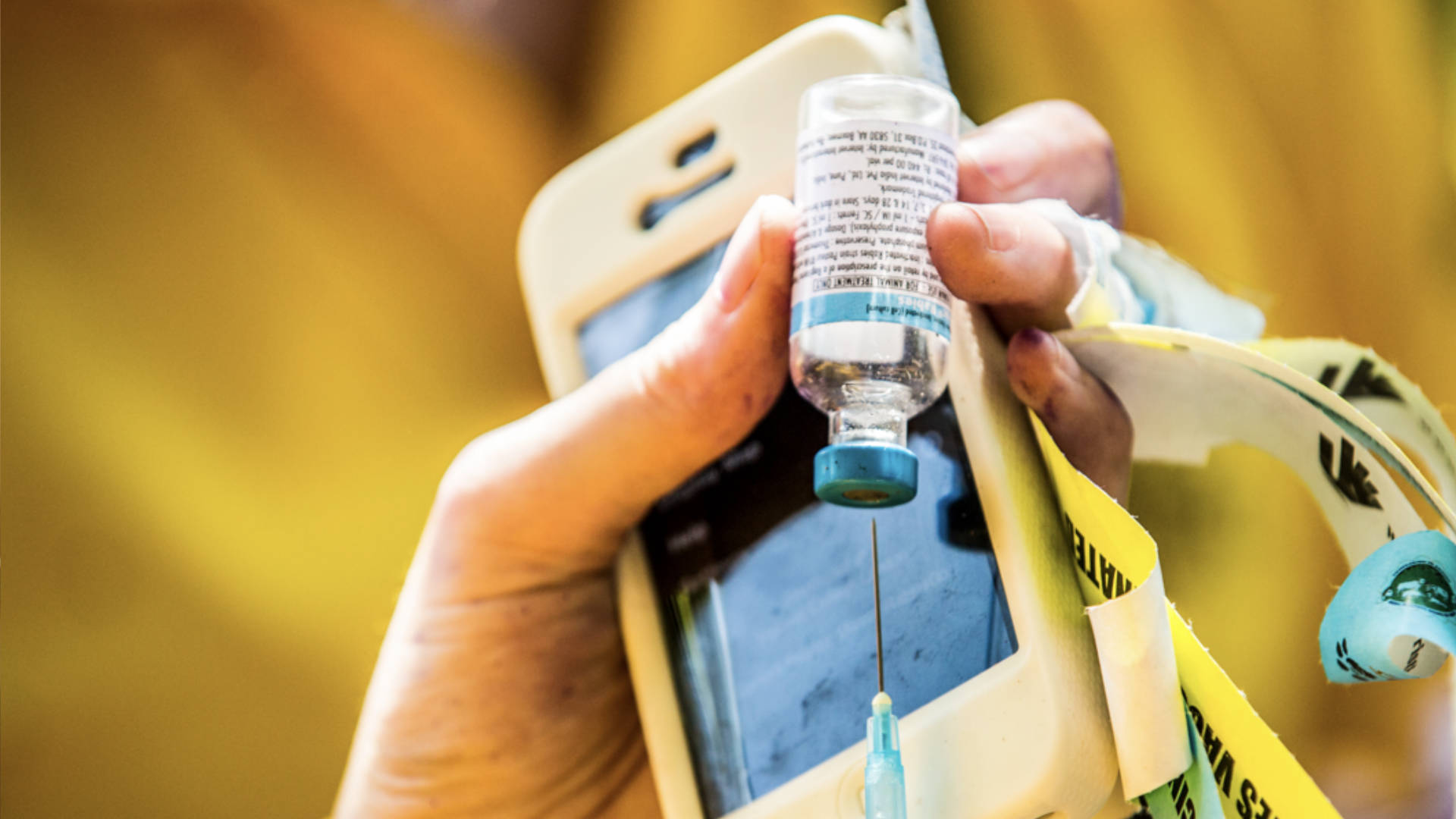
The Goa project was instrumental in the development of the WVS App, the platform used to direct vaccination teams and manage the campaign. The system has since been used to manage dog vaccination campaigns across the world, with over 1 million dog vaccination records to date. This paper describes the methods of this pioneering innovation in technology to enhance the delivery of public health initiatives.
A. D. Gibson, S. Mazeri, F. Lohr, D. Mayer, J. L. Burdon, R. M. Wallace, I. G. Handel, K. Shervell, B. M. Bronsvoort, R. J. Mellanby, L. Gamble, One million dog vaccinations recorded on mHealth innovation used to direct teams in numerous rabies control campaigns. PLoS One. 13
Reviewing Solutions of Scale for Canine Rabies Elimination in India
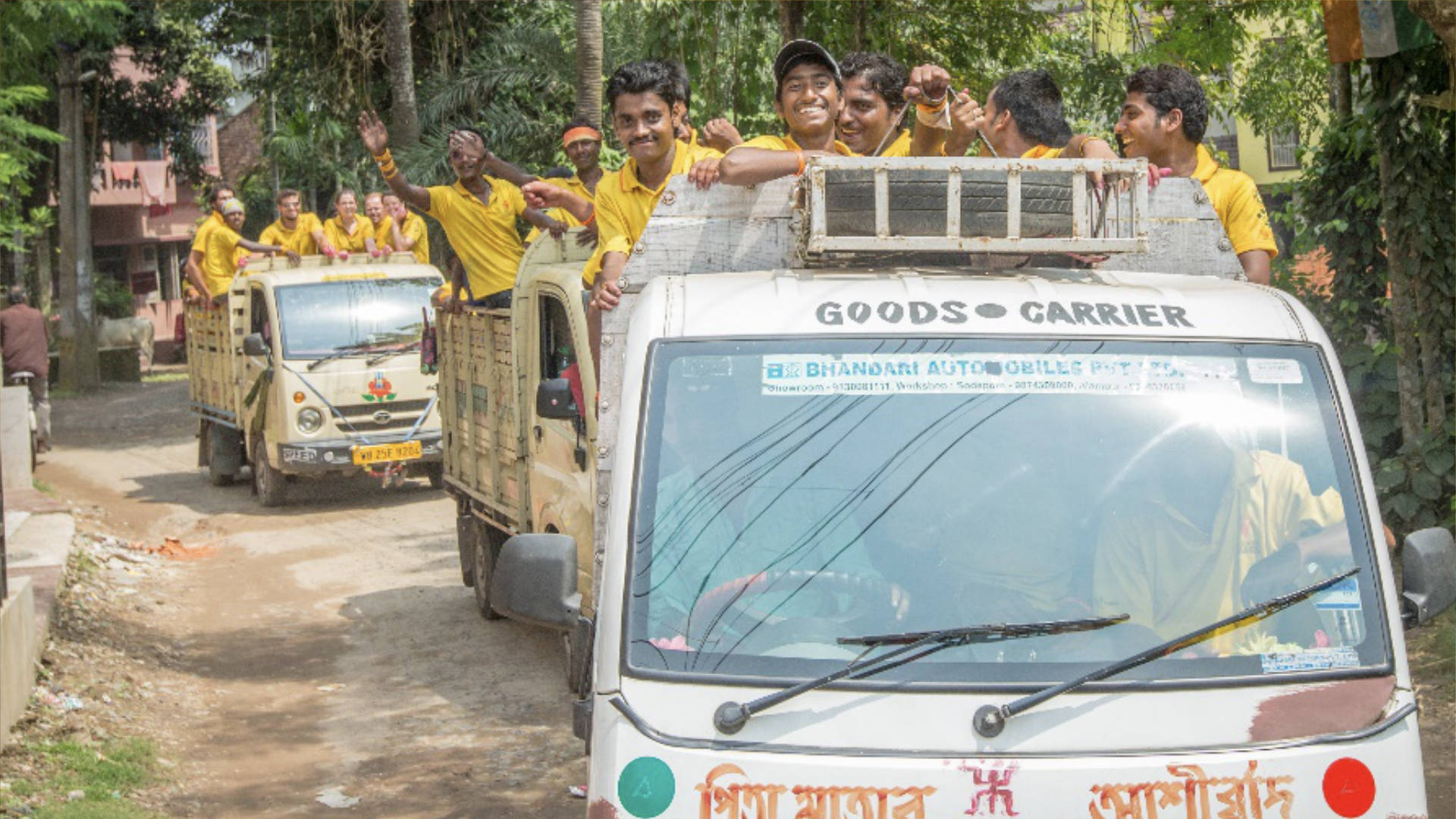
This article reviewed other large-scale vaccination initiatives to identify the factors that were key to success and how these might be applied in a large scale dog vaccination campaigns in India. Campaign duration is a key consideration when planning campaigns and has a direct impact on the size of the work-force that will be needed. The largest public health initiatives in history have relied on short pulse vaccination campaigns, making use of the government medical or veterinary work-forces to rapidly implement ubiquitous vaccination activities. Check out the full publication to read about some of the challenges in replicating these successes for dog vaccination across India:
Gibson, A.D.; Wallace, R.M.; Rahman, A.; Bharti, O.K.; Isloor, S.; Lohr, F.; Gamble, L.; Mellanby, R.J.; King, A.; Day, M.J.; et al. Reviewing Solutions of Scale for Canine Rabies Elimination in India. Trop. Med. Infect. Dis. 2020, 5, 1-22.
Evaluation of an immunochromatographic assay as a canine rabies surveillance tool in Goa, India
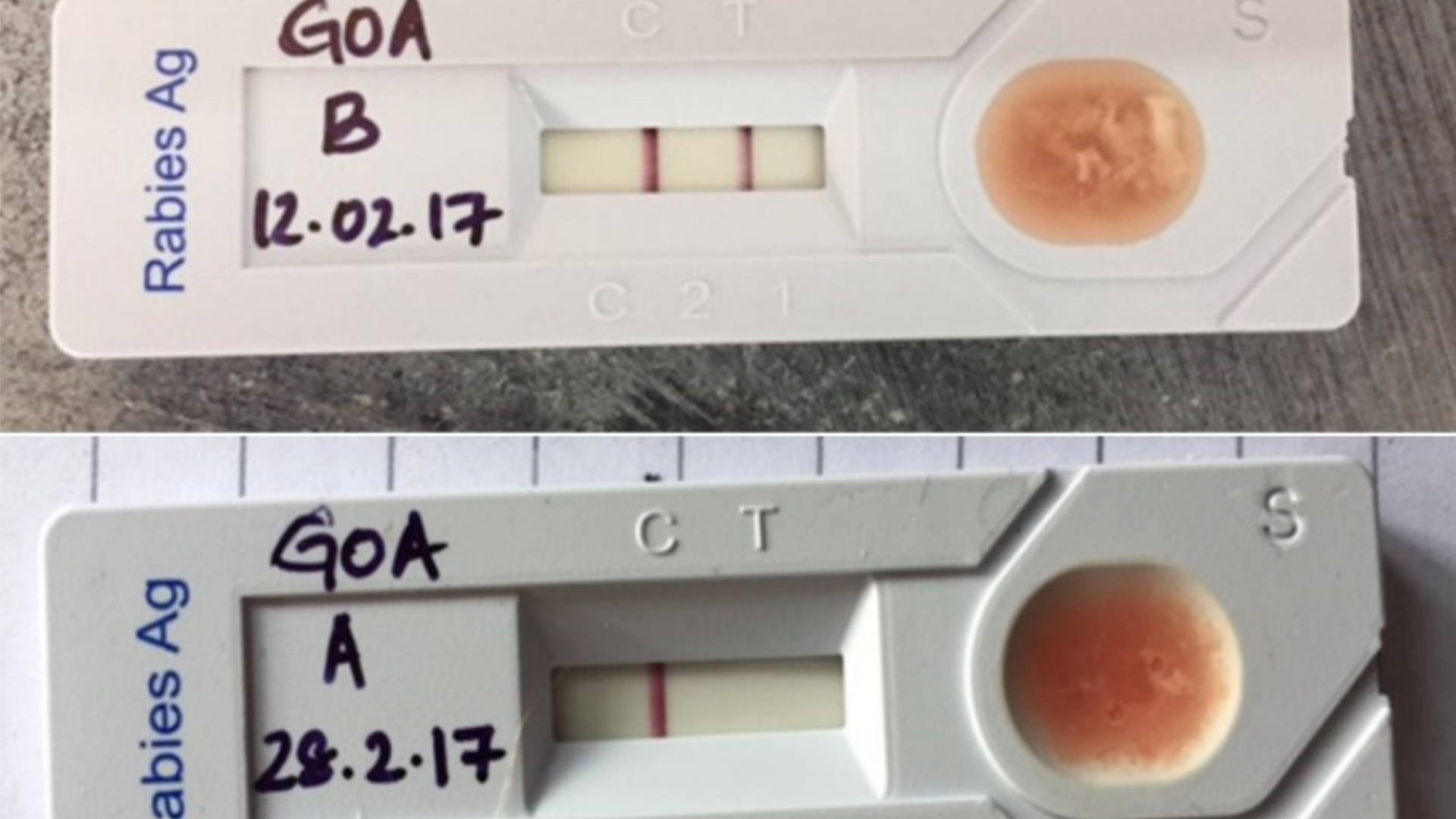
Establishing the capacity to routinely test dogs for rabies is a critical first step in any rabies control initiative. Gold-standard rabies tests require a well-equipped lab and trained technicians and are not available in most parts of India. This limits the chances of suspected dogs being tested, and therefore the true number of rabies cases across an area is never known, there is no evidence that control activities are needed and the cycle of neglect continues whilst people are dying of rabies. In this study we evaluate an on-the-spot test which can be performed in the field. The test is not approved by OIE and so although it cannot be used as a definitive test upon which to base decision-making, we found that where the test is Positive we can be confident that rabies virus is present. We believe that this immediate opportunity for screening samples motivates field staff to take samples and submit them for laboratory testing, even when they may not hear a result for some time and so could be hugely beneficial in increasing the testing of dogs across India.
Yale, G.; Gibson, A.D.; Mani, R.S.; Harsha, P.K.; Costa, N.C.; Corfmat, J.; Otter, I.; Otter, N.; Handel, I.G.; Bronsvoort, B.M.; et al. Evaluation of an immunochromatographic assay as a canine rabies surveillance tool in goa, india. Viruses 2019, 11, 1-10.
Oral bait handout as a method to access roaming dogs for rabies vaccination in Goa, India: A proof of principle study
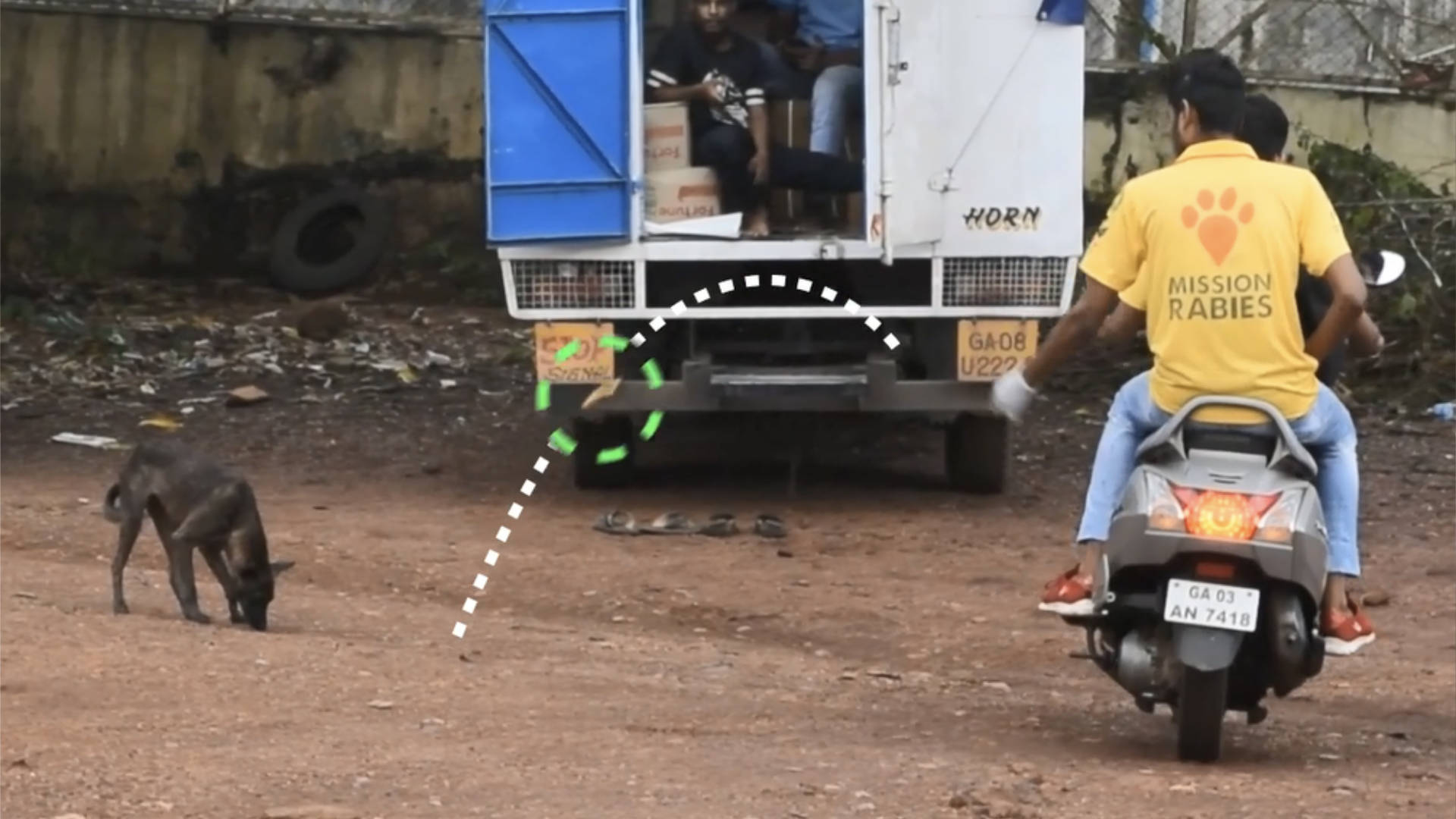
To vaccinate a country the size of India, a highly efficient method to vaccinate roaming dogs will be needed. Oral rabies vaccines have been used for decades to successfully control rabies in wildlife in Europe and America, however they are not yet approved for use in dogs. There are many studies demonstrating that oral rabies vaccines are safe and effective for use in dogs, however evaluation of how they would be practically distributed was lacking. These vaccines are not available in India and so in 2019 we conducted two studies exploring the methods of distribution and likely success using placebo baits.
In this study we compared the use of an oral bait handout method with vaccinating roaming dogs using nets. We found that a combined approach of vaccinating owned and friendly dogs by injection whilst offering other roaming dogs oral bait was far more efficient than using teams of net catchers. The current Goa campaign has shown that elimination of rabies is totally possible using net-catching methods, however to rapidly scale these activities to large states of India, the use of oral rabies vaccine will offer greater efficiency in reaching that critical herd immunity.
Gibson, A.D.; Yale, G.; Vos, A.; Corfmat, J.; Airikkala-otter, I.; King, A.; Wallace, R.M.; Gamble, L.; Handel, I.G.; Mellanby, R.J.; et al. Oral bait handout as a method to access roaming dogs for rabies vaccination in Goa , India : A proof of principle study. Vaccine X 2019, 100015.
Non-Meat-Based, Mass Producible and Effective Bait for Oral Vaccination of Dogs against Rabies in Goa State, India
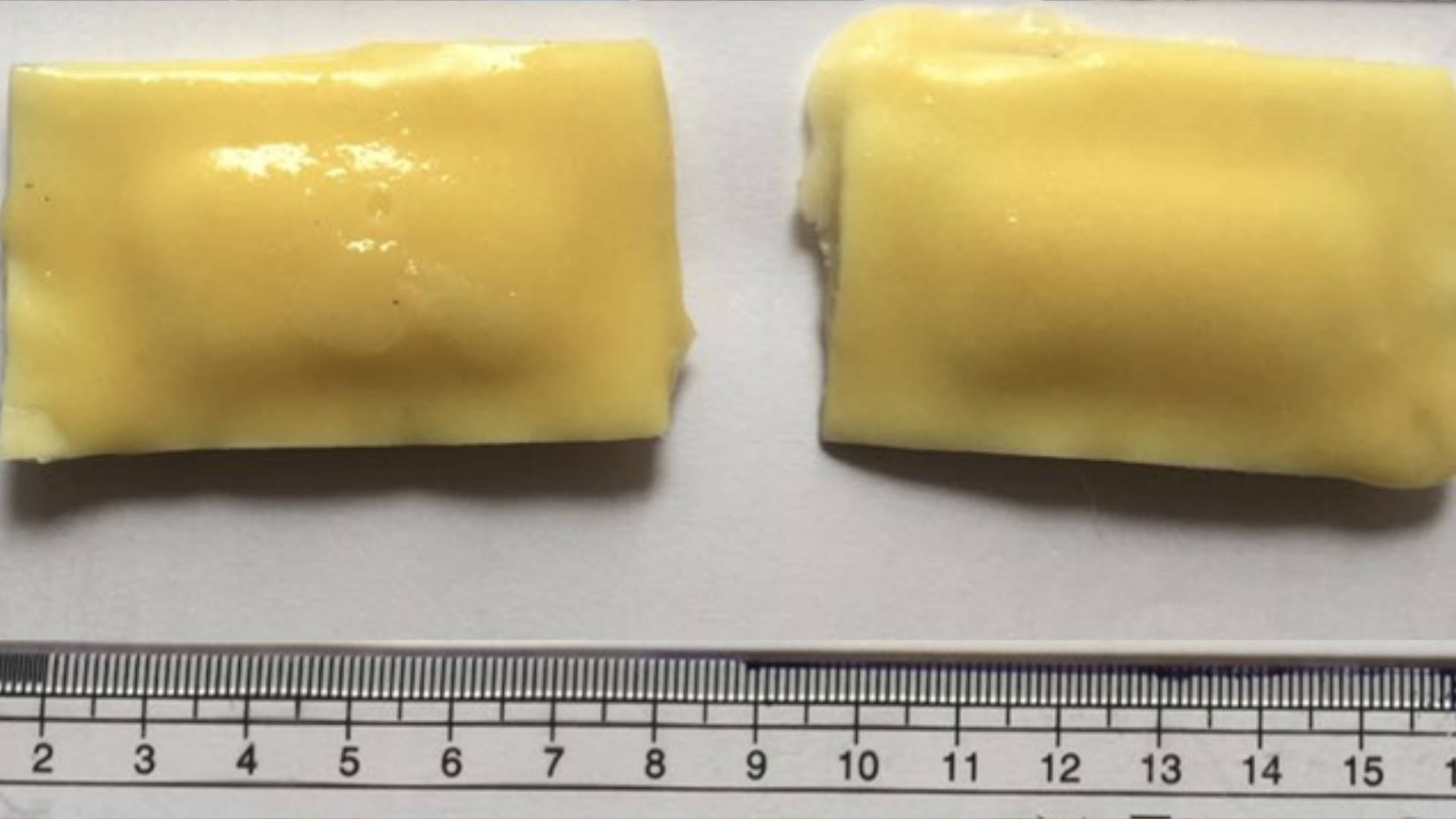
In this study we trialed different types of bait to see which the dogs preferred, so that should the oral vaccine become available, the method of delivery has already been evaluated. We found that an egg-based bait was very popular and would likely enable the vaccination of a high proportion of inaccessible dogs in free-roaming dogs in India.
Gibson, A.D.; Mazeri, S.; Yale, G.; Desai, S.; Naik, V.; Corfmat, J.; Ortmann, S.; King, A.; Müller, T.; Handel, I.; et al. Development of a Non-Meat-Based, Mass Producible and Effective Bait for Oral Vaccination of Dogs against Rabies in Goa State, India. Trop. Med. Infect. Dis. 2019, 4, 118.
